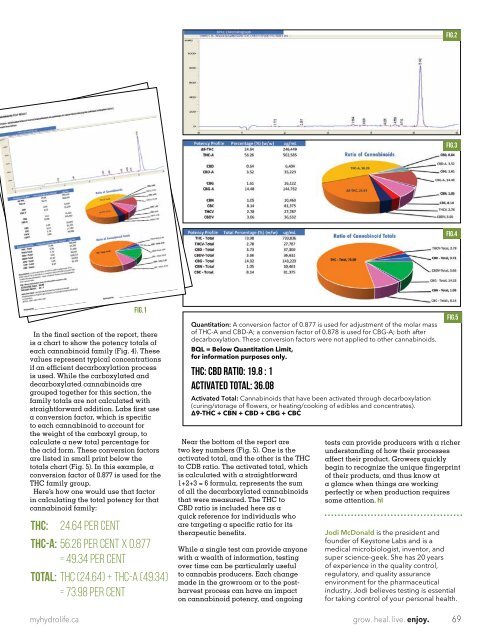Hydrolife Canada February/March 2017
It is amazing how an event from almost 20 years ago can remain fresh in the mind. It certainly doesn’t seem that long ago that Canadian Ross Rebagliati rocketed down Nagano’s Olympic giant slalom snowboard course, ripping through the finish line to claim the first-ever Olympic men’s snowboarding gold medal despite starting the final run in eighth position. Since then, Rebagliati has become a cultural phenomenon and advocate of marijuana use, and it is no coincidence that since that foggy day on Mount Yakebitai near Nagano, how we perceive the use of marijuana in society has changed for the better. Hydrolife recently caught up with Rebagliati to talk about Nagano, his thoughts on marijuana, and the launch of Ross’ Gold.
It is amazing how an event from almost 20 years ago can remain fresh in the mind. It certainly doesn’t seem that long ago that Canadian Ross Rebagliati rocketed down Nagano’s Olympic giant slalom snowboard course, ripping through the finish line to claim the first-ever Olympic men’s snowboarding gold medal despite starting the final run in eighth position. Since then, Rebagliati has become a cultural phenomenon and advocate of marijuana
use, and it is no coincidence that since that foggy day on Mount Yakebitai near Nagano, how we perceive the use of marijuana in society has changed for the better. Hydrolife recently caught up with Rebagliati to talk about Nagano, his thoughts on marijuana, and the launch of Ross’ Gold.
Create successful ePaper yourself
Turn your PDF publications into a flip-book with our unique Google optimized e-Paper software.
FIG.2<br />
FIG.3<br />
FIG.4<br />
FIG.1<br />
In the final section of the report, there<br />
is a chart to show the potency totals of<br />
each cannabinoid family (Fig. 4). These<br />
values represent typical concentrations<br />
if an efficient decarboxylation process<br />
is used. While the carboxylated and<br />
decarboxylated cannabinoids are<br />
grouped together for this section, the<br />
family totals are not calculated with<br />
straightforward addition. Labs first use<br />
a conversion factor, which is specific<br />
to each cannabinoid to account for<br />
the weight of the carboxyl group, to<br />
calculate a new total percentage for<br />
the acid form. These conversion factors<br />
are listed in small print below the<br />
totals chart (Fig. 5). In this example, a<br />
conversion factor of 0.877 is used for the<br />
THC family group.<br />
Here’s how one would use that factor<br />
in calculating the total potency for that<br />
cannabinoid family:<br />
THC: 24.64 PER CENT<br />
THC-A: 56.26 PER CENT X 0.877<br />
= 49.34 PER CENT<br />
TOTAL: THC (24.64) + THC-A (49.34)<br />
= 73.98 per cent<br />
Quantitation: A conversion factor of 0.877 is used for adjustment of the molar mass<br />
of THC-A and CBD-A; a conversion factor of 0.878 is used for CBG-A; both after<br />
decarboxylation. These conversion factors were not applied to other cannabinoids.<br />
BQL = Below Quantitation Limit,<br />
for information purposes only.<br />
THC: CBD RATIO: 19.8 : 1<br />
ACTIVATED TOTAL: 36.08<br />
Activated Total: Cannabinoids that have been activated through decarboxylation<br />
(curing/storage of flowers, or heating/cooking of edibles and concentrates).<br />
9-THC + CBN + CBD + CBG + CBC<br />
Near the bottom of the report are<br />
two key numbers (Fig. 5). One is the<br />
activated total, and the other is the THC<br />
to CDB ratio. The activated total, which<br />
is calculated with a straightforward<br />
1+2+3 = 6 formula, represents the sum<br />
of all the decarboxylated cannabinoids<br />
that were measured. The THC to<br />
CBD ratio is included here as a<br />
quick reference for individuals who<br />
are targeting a specific ratio for its<br />
therapeutic benefits.<br />
While a single test can provide anyone<br />
with a wealth of information, testing<br />
over time can be particularly useful<br />
to cannabis producers. Each change<br />
made in the growroom or to the postharvest<br />
process can have an impact<br />
on cannabinoid potency, and ongoing<br />
FIG.5<br />
tests can provide producers with a richer<br />
understanding of how their processes<br />
affect their product. Growers quickly<br />
begin to recognize the unique fingerprint<br />
of their products, and thus know at<br />
a glance when things are working<br />
perfectly or when production requires<br />
some attention.<br />
Jodi McDonald is the president and<br />
founder of Keystone Labs and is a<br />
medical microbiologist, inventor, and<br />
super science-geek. She has 20 years<br />
of experience in the quality control,<br />
regulatory, and quality assurance<br />
environment for the pharmaceutical<br />
industry. Jodi believes testing is essential<br />
for taking control of your personal health.<br />
myhydrolife.ca grow. heal. live. enjoy. 69




![Hydrolife Magazine December 2017/January 2018 [CANADIAN EDITION]](https://img.yumpu.com/59790088/1/190x247/hydrolife-magazine-december-2017-january-2018-canadian-edition.jpg?quality=85)
![Hydrolife Magazine December 2017/January 2018 [USA EDITION]](https://img.yumpu.com/59790042/1/190x247/hydrolife-magazine-december-2017-january-2018-usa-edition.jpg?quality=85)
![Hydrolife Magazine October/November 2017 [Canada Edition]](https://img.yumpu.com/59493562/1/190x247/hydrolife-magazine-october-november-2017-canada-edition.jpg?quality=85)
![Hydrolife Magazine October/November 2017 [USA Edition]](https://img.yumpu.com/59493548/1/190x247/hydrolife-magazine-october-november-2017-usa-edition.jpg?quality=85)
![Hydrolife Magazine August/September 2017 [USA Edition]](https://img.yumpu.com/59236656/1/190x247/hydrolife-magazine-august-september-2017-usa-edition.jpg?quality=85)








